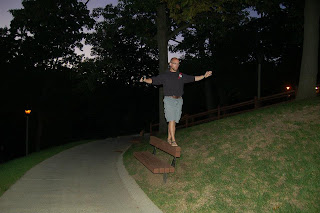Last weekend my girlfriend brought me to the latest chick flick that was written by the same guy that brought us
The Notebook. The movie was titled
Safe Haven and it's safe to say that it won't ever rival
The Notebook in popularity. However, that won't stop lonely ladies from renting it after purchasing a bottle of wine and a pint of Ben and Jerry's or using it as a way to punish their boyfriends(jk sweetie).
 |
| Your skin smells like skin. |
Now it is time to get down to my actual rant. During the movie, the main character starts reading
The China Study after finding it in a tourist shop's lost and found book pile.
The China Study is book written by T. Collin Campbell about a study done with T. Collin Campbell as one of its investigators. This seems like a unrelated plot point, because it is but it also becomes the basis for me to start ranting to myself and my girlfriend during the film.
 |
| The bible of vegans and vegetarians. |
|
| |
The China Study itself is actually a very interesting study and is probably one of the largest studies on human diet and health ever performed to date. However, there are some problems associated with this book/study. My first problem is the poor data analysis and statistics that was done for this study. T. Colin Campbell did great things by helping conduct this study but there are flaws with his data and the implications that he has derived from it. Denise Minger of Rawfoodsos.com became one of the first big viral critics of The China Study and a lot of her information/critiques about the China Study
can be found here.
Stan the Heretic, a physicist with interests in nutritional biochemistry also expands upon these analyses.
 |
| So you think you've got guts? Check out the comparison. |
Continuing on, later in the film the main character is conversing with the co-star about
The China Study and they go on a tangent about the health and musculature of gorillas as a result of their diet versus the common diet of us humans. The conversation between the two implicates that we should eat just like gorillas (vegetarian raw food diet). This might seem like a good inference for some people seeing that we are both primates, mammals, and that we humans struggle with diet and health.
There is a problem with this line of thinking...we are NOT gorillas. We are humans. Different anatomy and physiology people. I'm not trying to make the case that we shouldn't eat fruits and vegetables but I am trying to highlight the idiocy in thinking that we should copy another creature's diet. I am also not trying to claim that we have substantially different nutrient requirements compared to gorillas but we do have much different food requirements as a result of our biological differences. You might ask what science do I substantiate this with?
If you look at the above picture you will notice a big difference in the midsection of gorillas vs humans. The guts of a gorilla account for 2.9% of its body weight versus 1.7% of body weight for humans. This means that a humans gut is 40% smaller than that of a gorilla. What does this mean? Well the average western lowland gorilla obtains 57.4% of its energy from dietary fiber. All of this fiber is not directly digested by the gorilla but rather by its gut bacteria via fermentation which is then delivered to the gorilla in the form of short-chain fatty acids. These fatty acids can then be turned into saturated and monounsaturated fats by the gorilla's body. Humans on the other hand can only obtain about 7% of energy from fiber due to our decreased length of large intestines which is the sight of fiber digestion in primates like gorillas and humans. The large intestines make up 60% of the gorillas gut where it only comprises 17% of the human gut. This is obviously a problem if you want to start eating like a gorilla and has profound implications on how foods are digested and converted to different nutrients in the body. Lets compare at the macro-nutrient composition as % of total energy of the gorillas diet before and after digestion.
Before Digestion After Digestion
Fats:
Fat:
2.3% Polyunsaturated Fats:
<2%
Monounsatured/Saturated Fats:
58%
Protein: 24.4% Protein: 24.4%
Carbohydrate(ex fiber): 15.9%
Carbohydrate: 15.9%
Fiber: 57.4% Fiber: Converted
Source: Jaminet, Paul; Jaminet, Shou-Ching (2012-12-11).
Perfect Health Diet (Kindle Locations 812-831). Simon & Schuster, Inc.. Kindle Edition.
By looking at the before and after picture here we are able to see how a gorilla eats a low fat, high fiber, moderate protein and low carbohydrate diet by look at just food sources. When we look at the biological picture we see that the gorillas body is actually producing a high fat, low carbohydrate, moderate protein diet that is similar to the macro-nutrient ratios found in sources like mammalian breast milk and the proportions touted by paleolithic inspired diet advocates.
In conclusion, I don't think it is wise to try to eat what other mammals eat. I do however think that eating the nutrient composition of other mammals may be a wise model considering that we share similar cellular structures and cellular demands. I do not understand why this aside was thrown into the movie...I do not know if the writer is secretly trying to promote
The China Study, or if they are trying to appeal to the vegan and vegetarian crowds? Maybe it was just a silly fact that they threw into the movie to act as a conversation piece or for levity but all I know is that it made me want to rant. So I did.






.JPG)









.gif)
.JPG)

